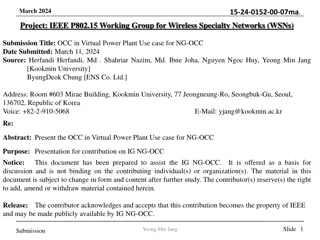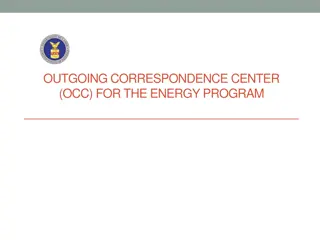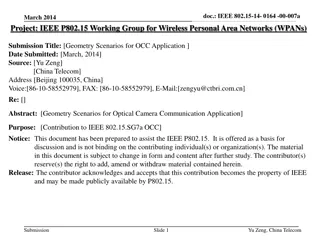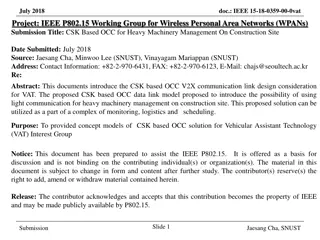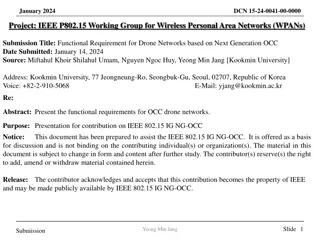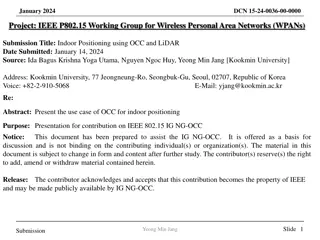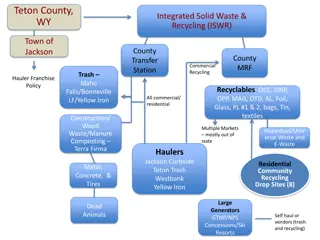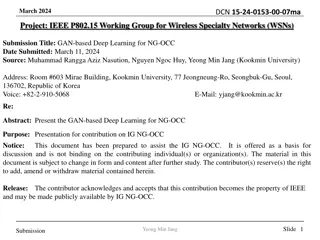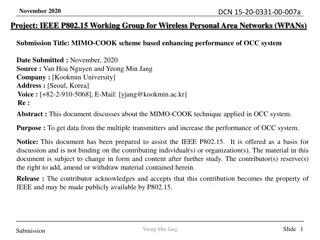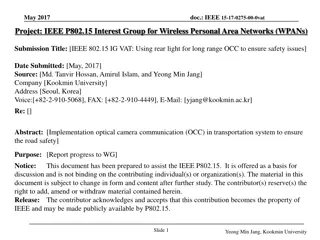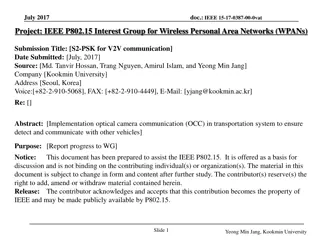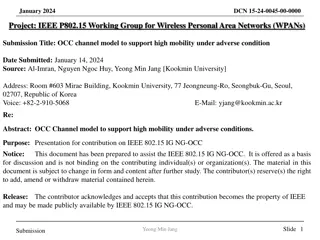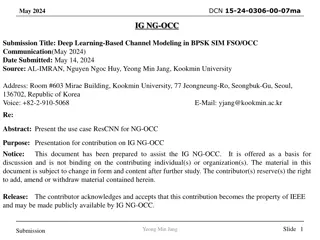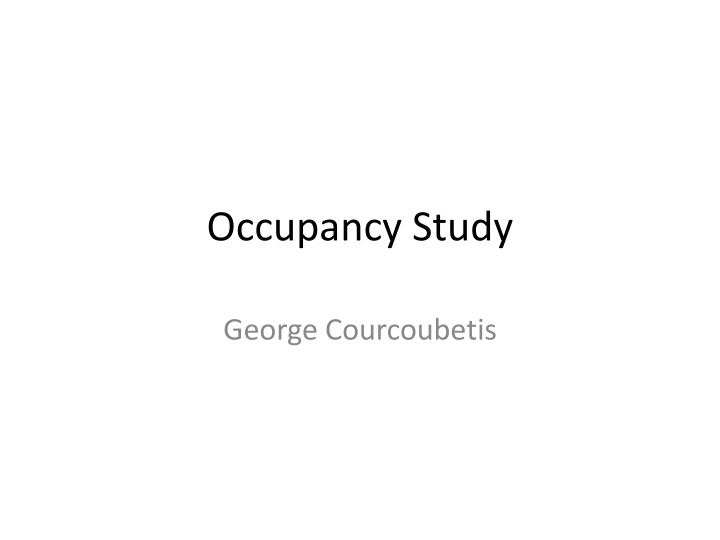
Innovative Study on Occupancy Distribution in Particle Physics Experiments
Explore a detailed study on occupancy distribution for FCAL channels based on processes, events, and polarization states in particle physics experiments. The study involves deriving luminosity, analyzing processes, and utilizing advanced methods for event extraction and calculation.
Download Presentation

Please find below an Image/Link to download the presentation.
The content on the website is provided AS IS for your information and personal use only. It may not be sold, licensed, or shared on other websites without obtaining consent from the author. If you encounter any issues during the download, it is possible that the publisher has removed the file from their server.
You are allowed to download the files provided on this website for personal or commercial use, subject to the condition that they are used lawfully. All files are the property of their respective owners.
The content on the website is provided AS IS for your information and personal use only. It may not be sold, licensed, or shared on other websites without obtaining consent from the author.
E N D
Presentation Transcript
Occupancy Study George Courcoubetis
Goal Produce the occupancy distribution for FCAL channels for a single train
Derivation of Luminosity The train luminosity with a 5hz collision rate is given by: LTRAIN=3.6*10-5fb-1s-1*1 5s = 7.2*10-6fb-1
Processes Included Pair backgrounds ->hadrons Bhabha s 32 lower cross section processes Criterion: Included processes with expected event number 0.1 per train
Method Used Norman Graf's Calorimeter Occupancy Driver to extract event number cell ID and position per hit for FCAL Printed the information for each hit in a text file One text file per process A python script was written to input the text files and output train occupancy results
Method For each physical process in the study, the expected number of events per train was calculated The number of events included was randomly selected according to the Poisson distribution based on the expected number The information from each event was combined to calculate the hits per detector cell
Treatment of polarization The polarization of the beam was assumed to be 80% for electrons 30% for positrons Processes had 1( ) , 2 (e or bhabha), or 4 (mostly e+e-) polarization states We assumed equal luminosity of each polarization state Nevents=Ltrains P
Question about bhabhas There are two kinds of bhabha files -80e-|+30e+ and +80e-|-30e+ What about -80e-|-30e+ and +80e-|+30e+? Even if cross section is 0 for e-L/e+L and e-R/e+R the event rate should not be 0 since the polarization is not 100% For now we have ignored the -80e-|-30e+ and +80e-|+30e+ polarizations and assumed 100% of the luminosity is in -80e-|+30e+ and +80e-|-30e+
Limitations Available pair background events are 1024, only enough for 39% of a single train True division between the polarization states is not known
Calculation of expected event numbers Pair background: 1 per bunch crossing, 2625 events (but only 39% of a single train available) ->hadrons: 1.2 per bunch crossing, 2625*1.2=3150 events The bhabha sample has a total Luminosity of hence Total number of Bhabha events is 100,334 hence 2006.68 is the expected event number per train. Bhabhas depend on polarization, since assumed a 50-50 polarization ~1003 events were included for each beam polarization 3.6*10-4fb-1 7.20-6fb-1trains-1= 50trains 3.6*10-4fb-1 .
Estimation of number of cells Assumed FCAL is an annulus shaped detector Found the hits with the greatest and lowest registered radius in the FCAL, r=1295mm & r=197mm, and the number of layers, n= 62. Used the cell geometry, 3.5x3.5 mm per cell
Output Histograms of number of hits per cell (occupancy) vs. number of cells, both exclusive and integrated over above a given frequency Text file with numerical display of results
Single train: Results in printed form Channel occupancy 0 24289956 percent 0.934229076923 Channel occupancy 1 1404692 percent 0.0540266153846 Channel occupancy 2 235374 percent 0.00905284615385 Channel occupancy 3 52012 Channel occupancy 4 13609 Channel occupancy 5 3346 Channel occupancy 6 790 Channel occupancy 7 179 Channel occupancy 8 34 Channel occupancy 9 7 Channel occupancy 10 1 percent 0.00200046153846 percent 0.00052342307692 percent 0.00012869230769 percent 3.03846153846e-05 percent 6.88461538462e-06 percent 1.30769230769e-06 percent 2.69230769231e-07 percent 3.84615384615e-08
Insight on the contribution of each process Green = Bhabhas+gammagamma to hadrons red = all except pairs blue = everything except lowcrossection black = everything = Bhabhas + gamma gamma + pair + low-cross section
Not that Low cross section Under the title of low cross section, there are two processes with high cross sections Two fermion production via electron positron annihilation (ids: 39068, 39069, 39070 and 39071) have a total event number of ~2006 per train. Down and anti-down quark production via two photon interaction (ids: 37577 709 events,37578 ~1100 events, 37579 ~1100 events, 37580 ~1648 events) has a total number of ~4550.
Occupancy contribution of pairs Black=everything Red=everything-pairs
Occupancy contribution of low cross section processes Black=everything Red=everything-low cross section
All processes, ten distinct trains in terms of prevalence in percent
Additional Plans Acquire more pairs Refine treatment of polarizations, especially bhabhas Study occupancy by layer Radial occupancy study Share the tools for further studies
Calculation of expected event numbers For the lower crossection processes Nevents=Ltrains P Where is crossection, P is number of polarisation states P is 1,2 or 4 since it depends on the polarization state of the electrons and positrons. 1 for processes involving photons , 2 for processes involving one positron (or electron) and a photon and 4 for processes involving an electron and a positron

